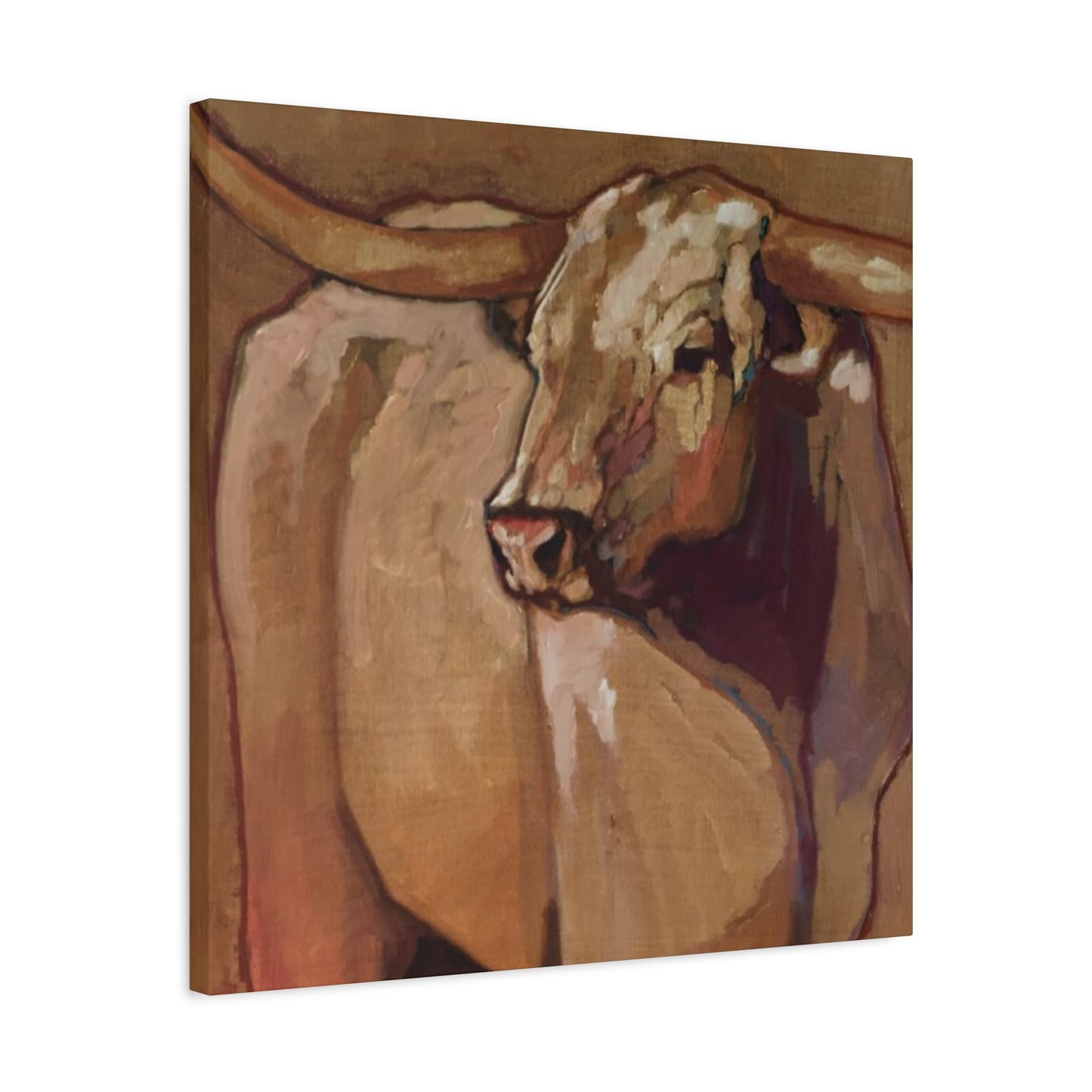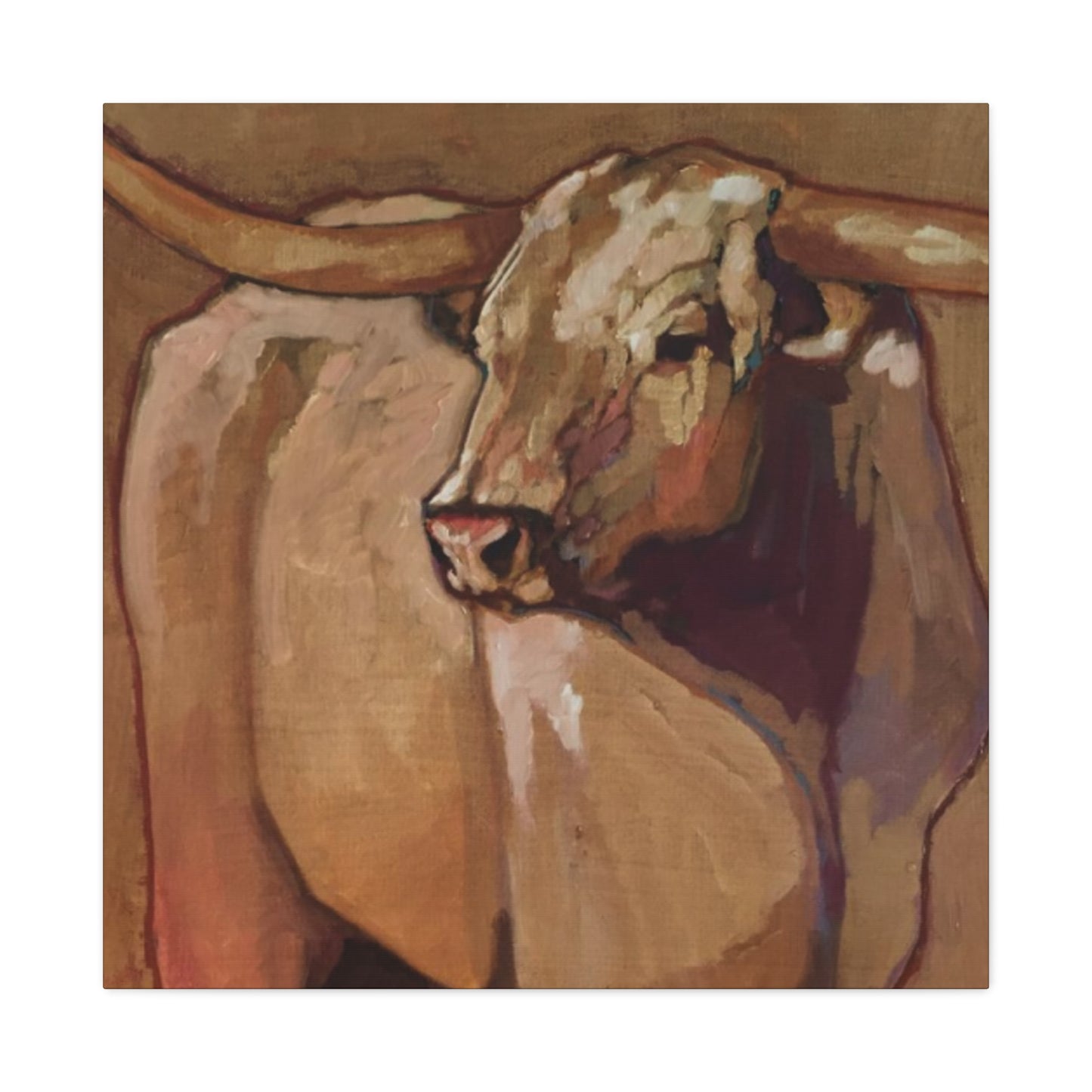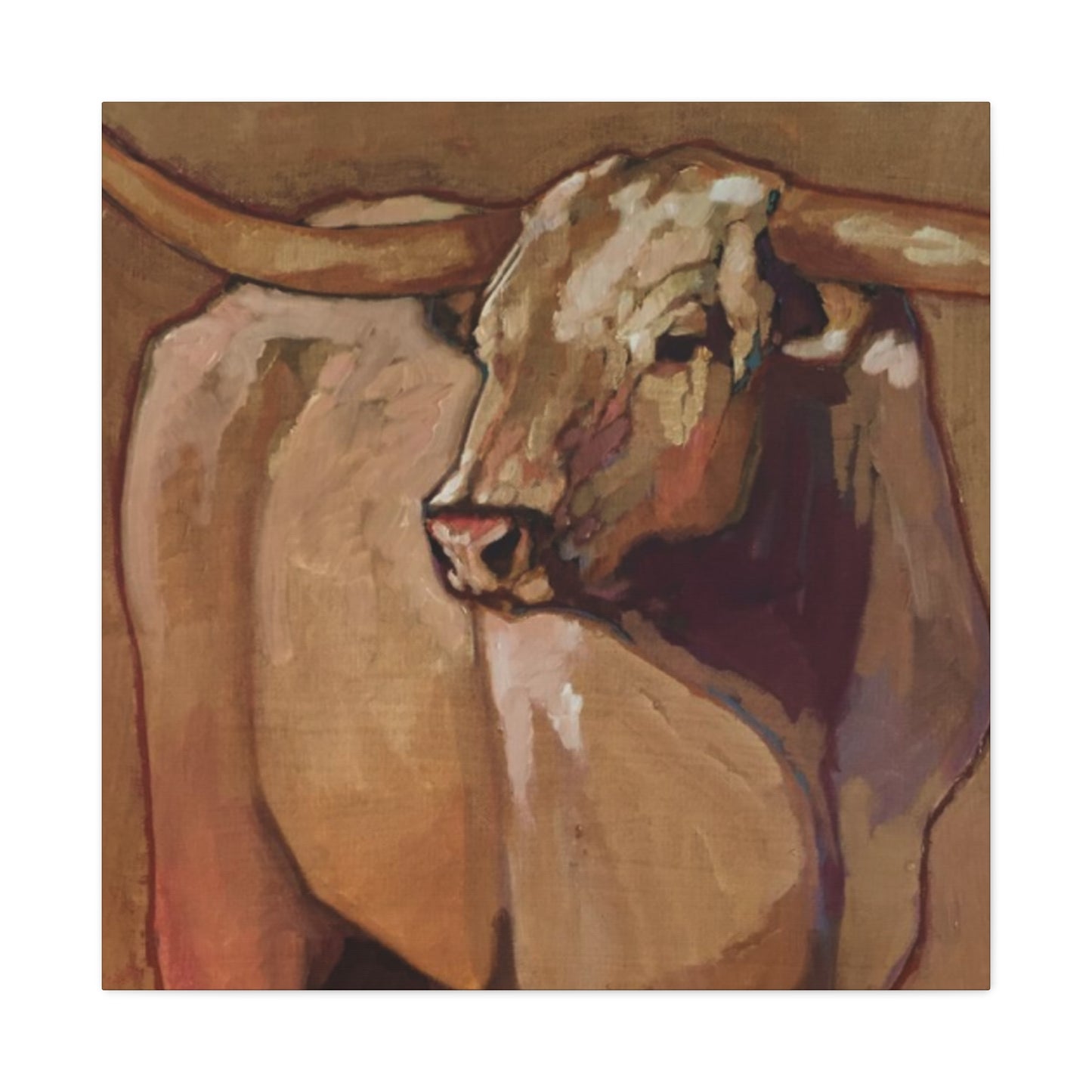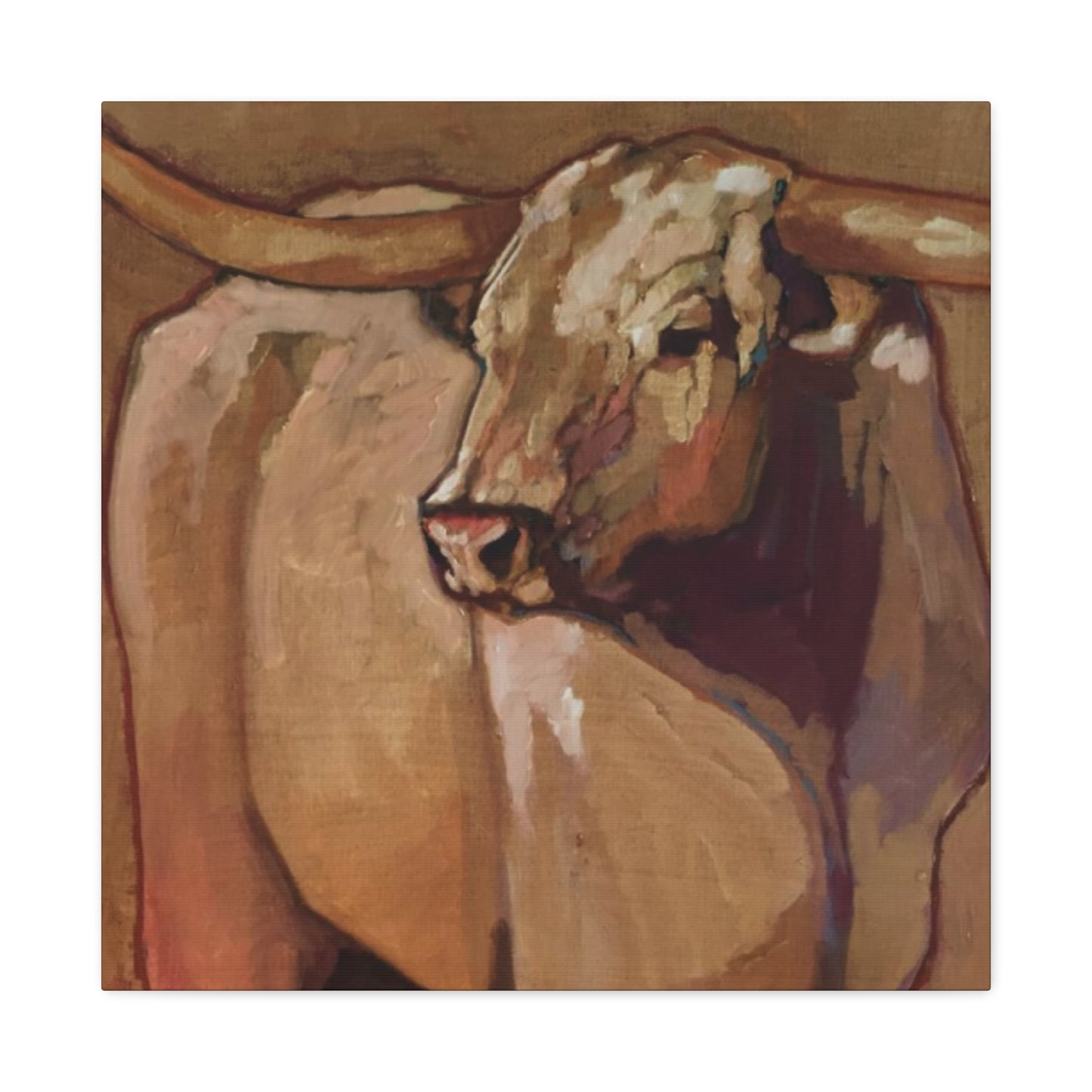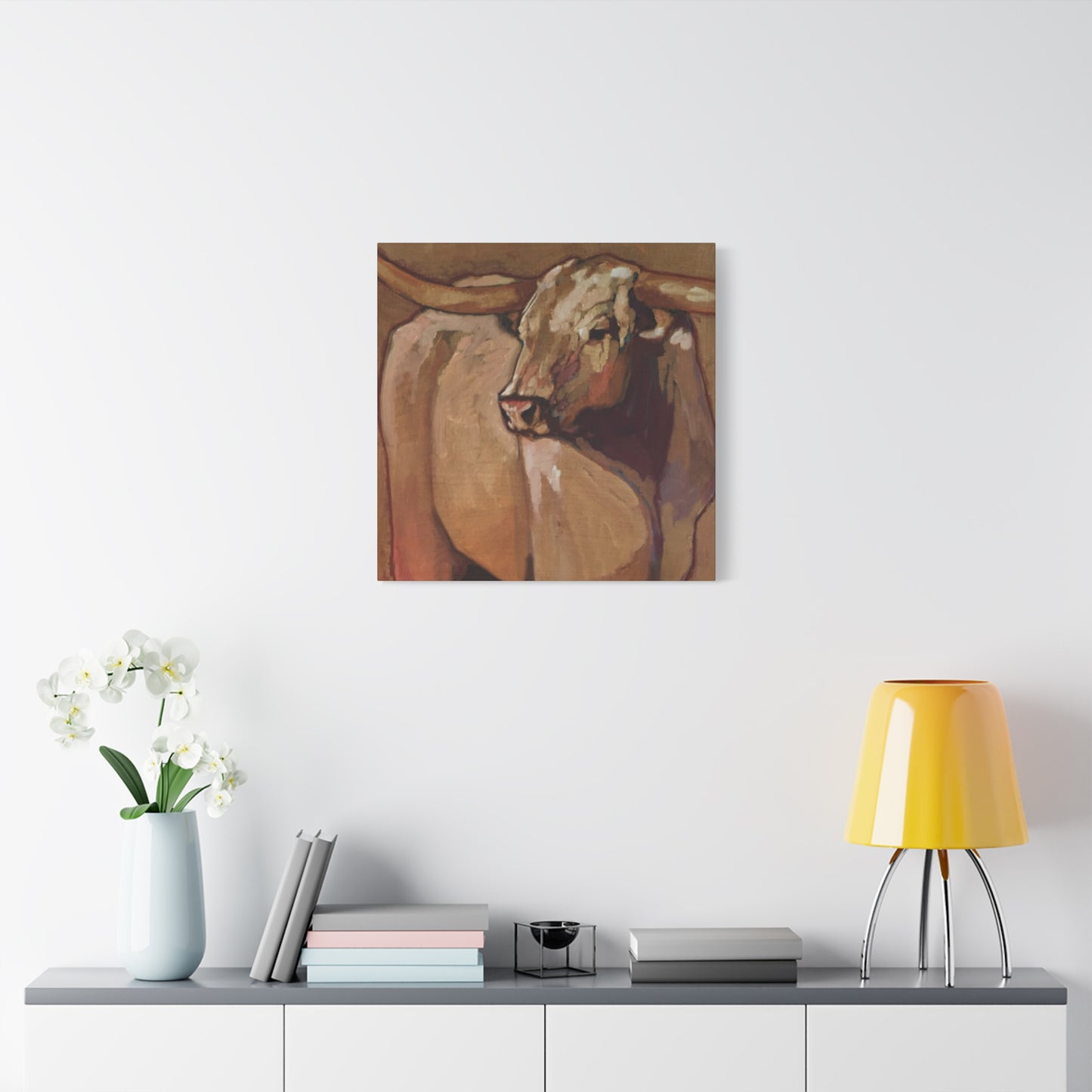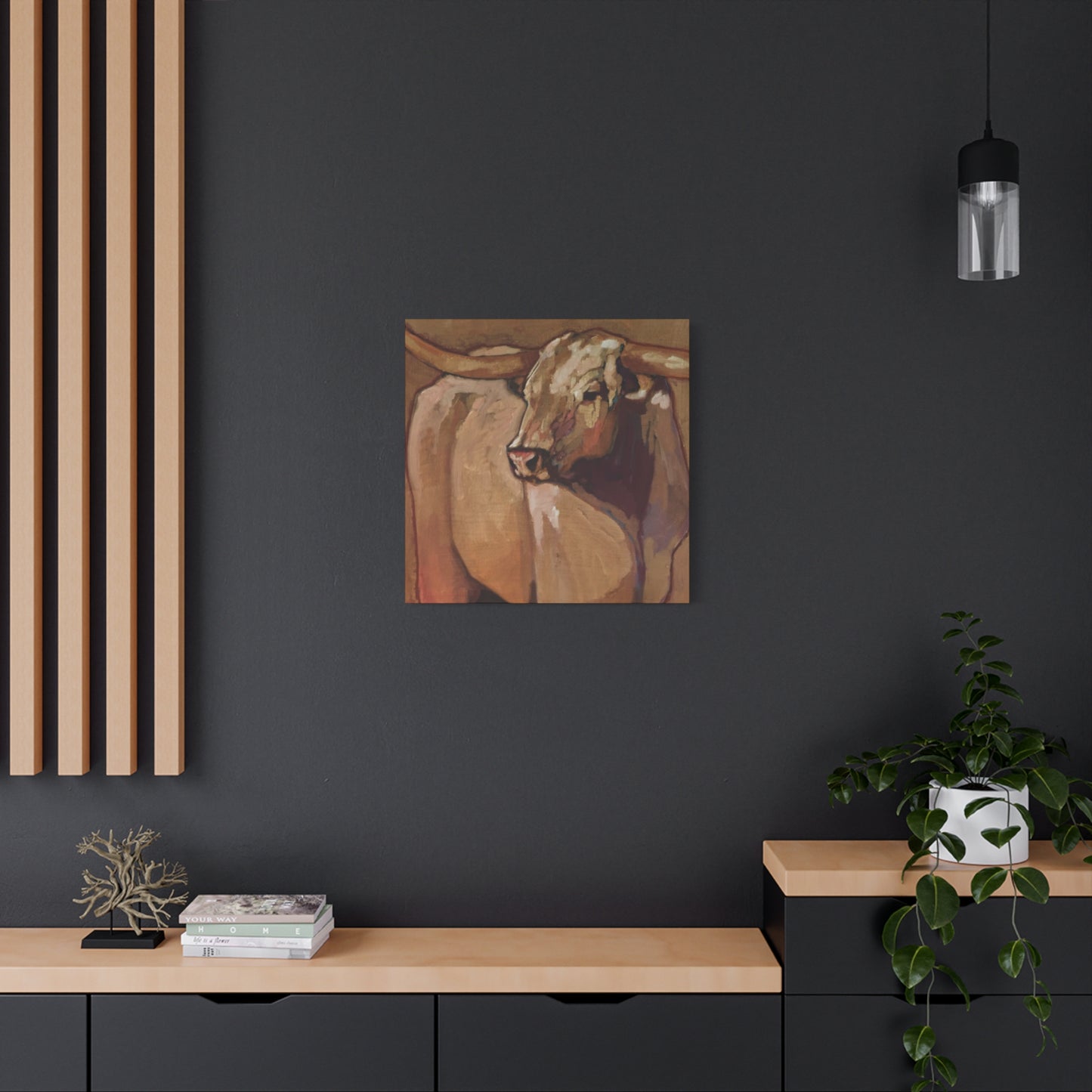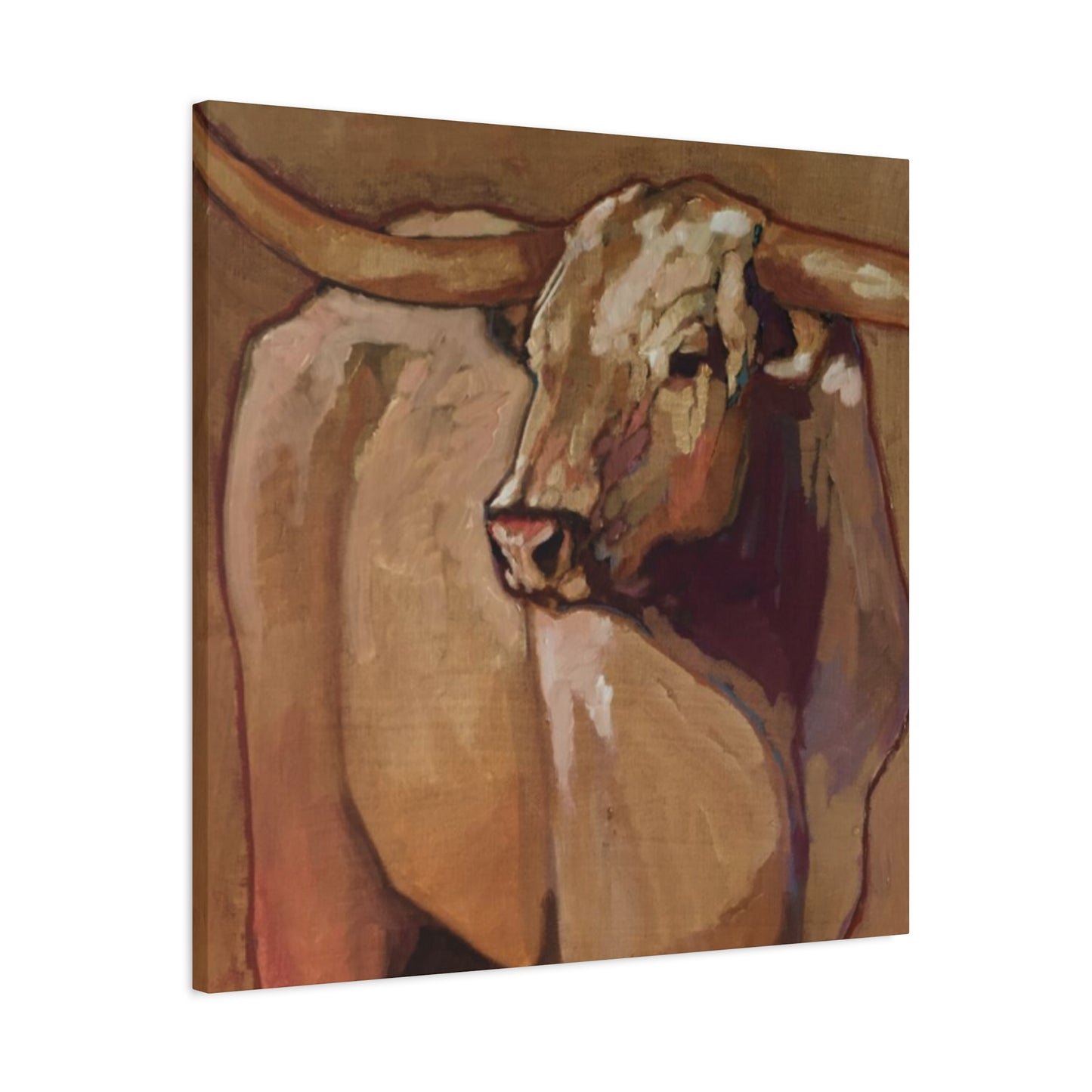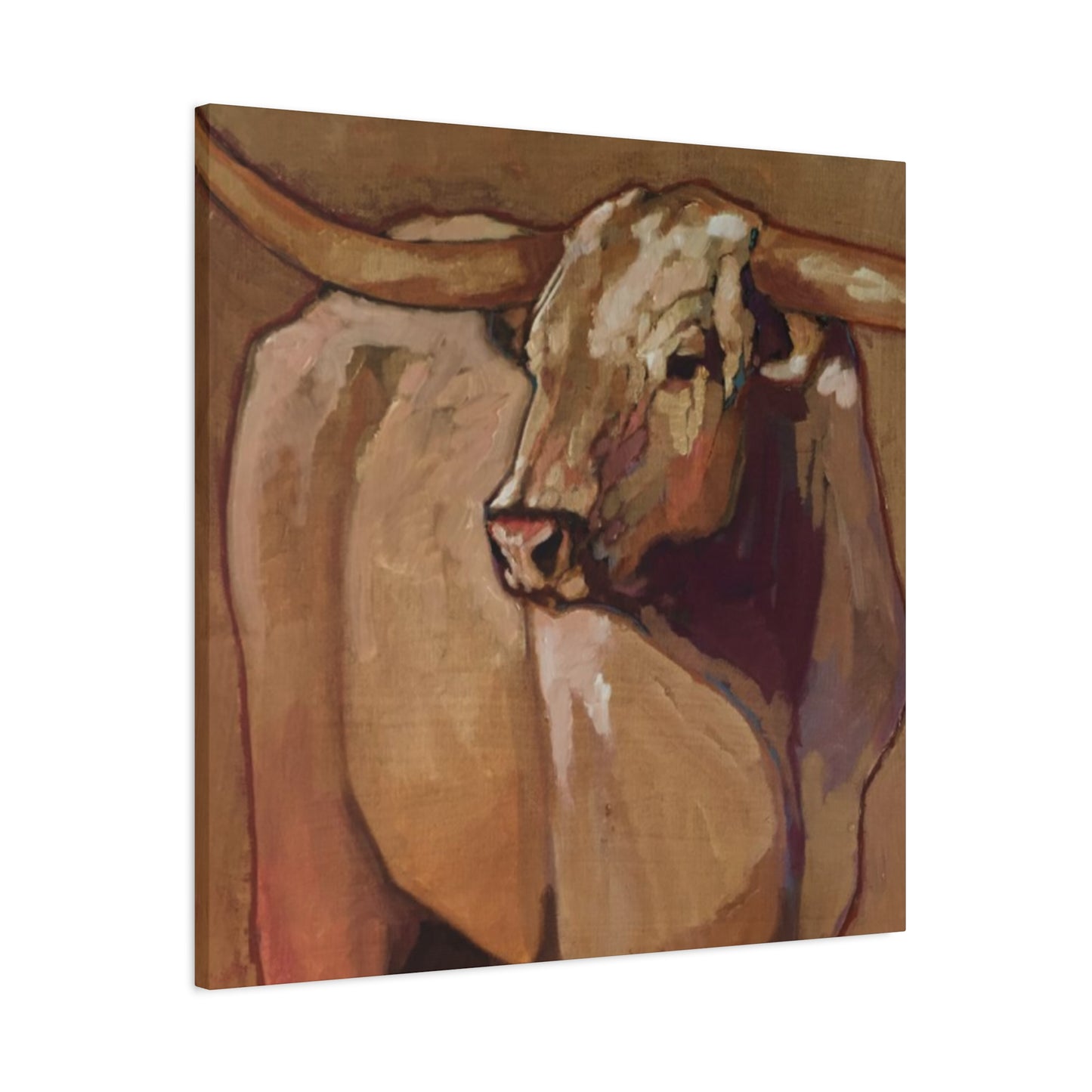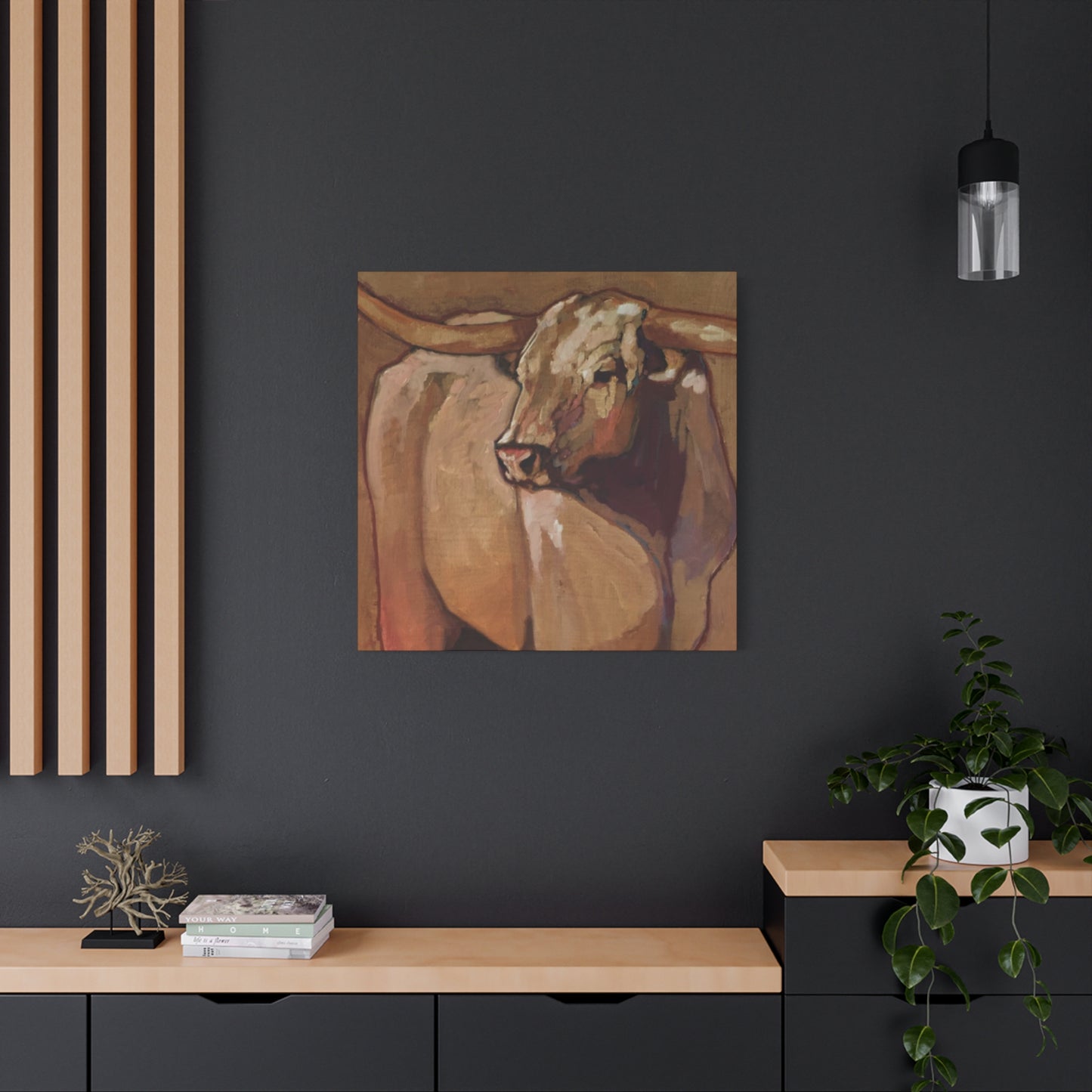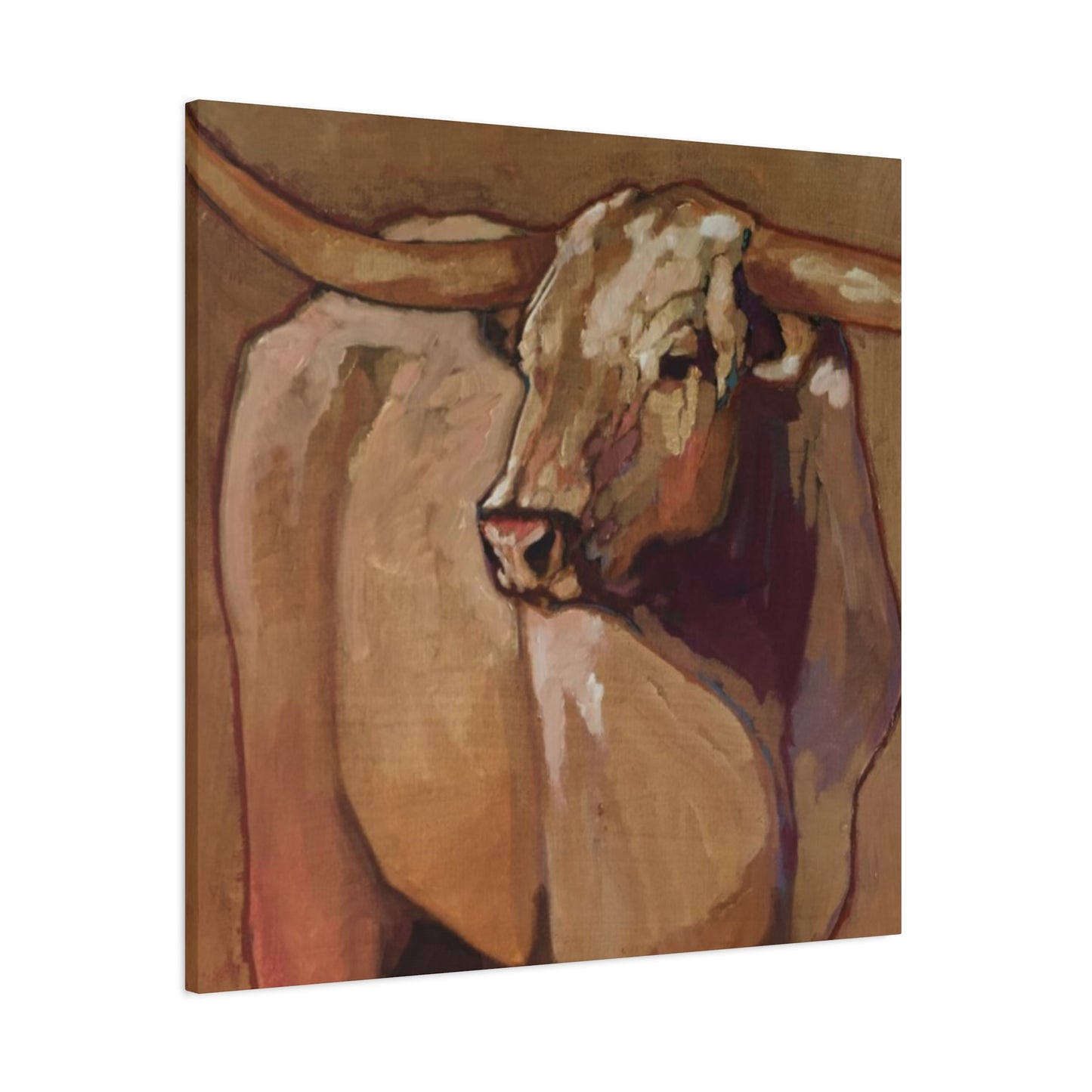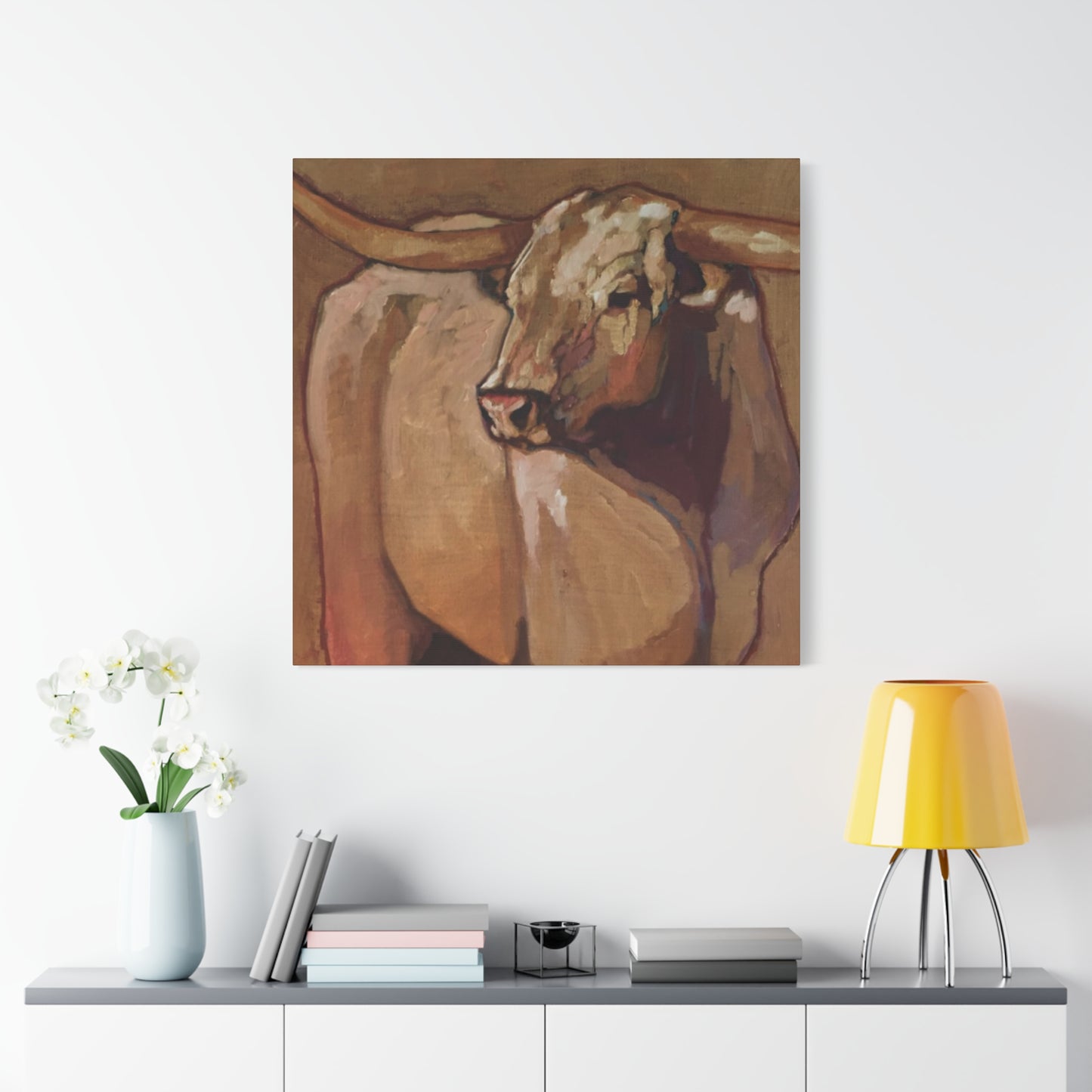Majesty of the West: Bull Longhorn Painting for Timeless Wall Art
The world of home decoration has witnessed countless trends come and go, yet few artistic themes have maintained their enduring appeal quite like longhorn wall art. These magnificent bovine subjects, with their distinctive curved horns and powerful presence, have captured the imagination of artists and homeowners alike for generations. The allure of longhorn paintings extends far beyond mere decoration, embodying a rich tapestry of cultural significance, artistic expression, and timeless aesthetic appeal that continues to resonate with contemporary audiences.
Longhorn wall art represents more than just visual appeal; it serves as a bridge connecting modern living environments with the storied heritage of the American West. These artistic representations capture the essence of a bygone era while simultaneously offering sophisticated design solutions for today's discerning homeowners. The enduring popularity of these pieces speaks to their ability to transform ordinary rooms into extraordinary environments that tell compelling stories of strength, freedom, and natural beauty.
The artistic interpretation of longhorns has evolved considerably over the decades, encompassing various styles from photorealistic portrayals to bold abstract interpretations. Each approach brings its own unique character and emotional resonance to the viewing experience. Whether rendered in traditional oil paints, contemporary acrylics, or mixed media compositions, these artworks consistently deliver visual impact that few other subjects can match.
Contemporary artists have embraced longhorn imagery with remarkable creativity, pushing the boundaries of conventional representation while maintaining respect for the subject's inherent majesty. This artistic evolution has resulted in a diverse collection of styles and approaches that cater to virtually every aesthetic preference and decorating scheme. From minimalist line drawings to elaborate mixed-media installations, longhorn wall art has proven its versatility and adaptability to modern design sensibilities.
The psychological impact of longhorn wall art cannot be understated. These pieces often evoke feelings of strength, determination, and connection to nature that many people find deeply appealing in their personal environments. The presence of such artwork can transform the entire atmosphere of a room, creating focal points that draw the eye and inspire conversation among visitors.
Magnificent Presence of Longhorn Artwork
The commanding presence of longhorn wall art stems from the inherent characteristics that make these animals so visually compelling. Their distinctive silhouette, characterized by those iconic sweeping horns, creates an instantly recognizable form that translates beautifully to artistic interpretation. Artists have long been drawn to the dramatic contrast between the animal's gentle nature and its imposing physical appearance, resulting in artwork that captures both power and grace in equal measure.
The visual impact of longhorn paintings often derives from their ability to fill substantial wall areas while maintaining artistic sophistication. Unlike smaller decorative pieces that might get lost in larger rooms, longhorn artwork naturally commands attention through both scale and subject matter. This makes them particularly valuable for homeowners seeking to create strong focal points in their living environments without resorting to overly busy or cluttered arrangements.
Color palettes in longhorn wall art tend to emphasize earth tones and natural hues that complement a wide range of decorating schemes. Browns, tans, deep reds, and weathered whites frequently appear in these compositions, often accented by the dramatic contrast of black horns against lighter backgrounds. These color choices not only reflect the natural appearance of the animals but also create harmonious relationships with wood furniture, leather upholstery, and other elements commonly found in contemporary homes.
The texture and brushwork visible in quality longhorn paintings add another layer of visual interest that enhances their decorative value. Whether achieved through traditional oil painting techniques or modern acrylic applications, the surface quality of these works often mirrors the rugged, weathered characteristics associated with Western themes. This textural element contributes significantly to the overall impact of the piece, creating artwork that rewards both distant viewing and close examination.
Longhorn wall art frequently incorporates environmental elements that enhance the narrative quality of the pieces. Desert landscapes, mountain ranges, prairie scenes, and dramatic skies often serve as backdrops that place the animals within their natural context. These compositional choices not only add visual depth but also strengthen the emotional connection between viewer and artwork by presenting a complete scene rather than an isolated subject.
The scale considerations for longhorn wall art require careful attention to proportion and placement within the intended environment. These pieces often work best when given adequate surrounding area to breathe, allowing viewers to appreciate the full impact of the composition without feeling overwhelmed by competing visual elements. Professional designers frequently recommend considering the viewing distance when selecting size, ensuring that the artwork can be properly appreciated from typical seating and standing positions within the room.
Reasons Longhorn Paintings Dominate Contemporary Decoration
The widespread adoption of longhorn paintings in contemporary home decoration reflects several key factors that make these artworks particularly well-suited to modern living environments. Primary among these is their ability to introduce natural elements and organic forms into increasingly urbanized living situations. As more people find themselves distanced from rural and natural environments, longhorn wall art provides a meaningful connection to the natural world that many find deeply satisfying.
The versatility of longhorn paintings allows them to function effectively across a broad spectrum of decorating styles. While naturally at home in rustic and Western-themed environments, these artworks have proven equally successful in contemporary, transitional, and even industrial design schemes. This adaptability stems from the timeless quality of the subject matter and the diverse artistic approaches available to artists working with longhorn themes.
Color compatibility represents another significant advantage of longhorn wall art in contemporary decoration. The natural color palette associated with these subjects tends to coordinate well with popular modern color schemes, particularly those emphasizing neutral tones and organic hues. This makes it relatively easy for homeowners to incorporate longhorn paintings into existing decorating schemes without requiring major color adjustments or renovations.
The storytelling aspect of longhorn wall art appeals to homeowners who appreciate artwork that goes beyond mere decoration to communicate meaning and emotion. These pieces often serve as conversation starters, allowing hosts to share their appreciation for Western heritage, natural beauty, or artistic craftsmanship with visitors. This narrative quality adds depth to the decorating experience that many find more satisfying than purely abstract or decorative alternatives.
Size options in longhorn wall art accommodate virtually any decorating need, from intimate accent pieces suitable for powder rooms to large-scale installations capable of anchoring great rooms or dining areas. This range of available sizes ensures that homeowners can find appropriate pieces regardless of their particular requirements or budget constraints. Additionally, the availability of series and collections allows for coordinated groupings that can fill large wall areas with cohesive artistic statements.
The investment value of quality longhorn wall art has contributed to its popularity among discerning collectors and decorators. Well-executed pieces by established artists often appreciate in value over time, making them not only decorative choices but also potential financial assets. This dual function appeals to practical homeowners who prefer purchases that serve multiple purposes rather than purely consumptive expenditures.
Maintenance requirements for longhorn wall art are typically minimal, making these pieces practical choices for busy households. Quality paintings properly framed and displayed require only occasional dusting and protection from direct sunlight to maintain their appearance for many years. This low-maintenance characteristic makes longhorn artwork particularly appealing to homeowners who want impactful decoration without ongoing care responsibilities.
From Pasture to Painted Canvas: Artistic Evolution of Longhorn Imagery
The artistic journey of longhorn imagery from its origins in functional documentation to its current status as sophisticated wall art reflects broader trends in American artistic development. Early depictions of these animals often served documentary purposes, created by artists and illustrators seeking to record the appearance and characteristics of cattle breeds important to the developing livestock industry. These early works, while sometimes lacking in artistic sophistication, established the visual vocabulary that contemporary artists continue to reference and reinterpret.
The transformation of longhorn imagery into fine art gained momentum during the mid-twentieth century as artists began to recognize the aesthetic potential of these distinctive animals. The development of Western art as a legitimate artistic movement provided context and market support for artists exploring longhorn themes, encouraging experimentation with style, technique, and interpretation that has continued to evolve.
Contemporary longhorn wall art demonstrates remarkable diversity in artistic approach, reflecting the broad range of techniques and philosophies that characterize modern artistic practice. Some artists pursue photorealistic representation, using advanced painting techniques to create incredibly detailed and lifelike portrayals that celebrate the physical beauty of the animals. Others embrace more interpretive approaches, using longhorn forms as starting points for explorations of color, texture, and composition that prioritize artistic expression over literal representation.
The influence of various artistic movements can be traced through the evolution of longhorn wall art. Abstract expressionist techniques have been applied to longhorn subjects, resulting in emotionally charged works that use color and brushwork to convey the essential spirit of the animals rather than their literal appearance. Pop art influences have led to bold, graphic interpretations that emphasize the iconic nature of longhorn imagery through simplified forms and striking color combinations.
Mixed-media approaches have opened new possibilities for longhorn wall art, allowing artists to incorporate diverse materials and techniques into single compositions. These works might combine traditional painting with collage elements, textural materials, or even three-dimensional components that add physical depth and tactile interest to the finished pieces. Such experimental approaches have expanded the definition of longhorn wall art beyond traditional painting into the realm of contemporary mixed-media installation.
The role of photography in documenting and inspiring longhorn wall art cannot be overlooked. High-quality photographic studies of these animals have provided artists with detailed reference material that supports increasingly sophisticated and accurate artistic interpretations. Additionally, some artists work directly with photographic processes, creating wall art that blurs the line between photography and painting through digital manipulation and hybrid printing techniques.
Regional variations in longhorn wall art reflect the diverse cultural contexts in which these animals have significance. Texas artists might emphasize the historical connection between longhorns and state identity, while Western artists from other regions might focus more on the animals' role in broader frontier mythology. These regional differences add richness and variety to the overall body of longhorn wall art available to collectors and decorators.
Contemporary Versus Traditional Longhorn Painting Styles
The distinction between contemporary and traditional approaches to longhorn wall art reflects broader conversations within the art world about representation, interpretation, and artistic purpose. Traditional longhorn paintings typically emphasize realistic representation, careful attention to anatomical accuracy, and settings that place the animals within historically accurate or archetypal Western environments. These works often employ classical painting techniques developed over centuries, resulting in artwork that demonstrates technical mastery while celebrating the timeless appeal of the subject matter.
Contemporary longhorn wall art, by contrast, frequently prioritizes artistic interpretation over literal representation. These works might use longhorn forms as inspiration for explorations of color theory, compositional dynamics, or emotional expression that goes well beyond simple documentation of animal appearance. Contemporary artists working with longhorn themes often bring experimental techniques, unconventional materials, and modern artistic philosophies to bear on traditional subject matter, creating hybrid works that speak to both historical heritage and current artistic discourse.
Abstract interpretations of longhorn imagery have become increasingly popular in contemporary wall art, offering viewers the opportunity to engage with the essence of these animals through non-representational means. Such works might capture the sweeping motion of horns through bold brushstrokes, suggest the power of the animals through dynamic color relationships, or evoke the vastness of their natural habitat through expansive compositional approaches. These abstract treatments allow for highly personal and emotional responses that literal representations might not achieve.
Realistic longhorn paintings continue to find enthusiastic audiences among collectors who appreciate technical skill and naturalistic beauty. These works often showcase the artist's ability to render fur texture, horn coloration, and environmental details with impressive accuracy and sensitivity. The best realistic longhorn wall art transcends mere copying to achieve artistic interpretation that reveals new aspects of beauty and character in familiar subjects.
The integration of contemporary color palettes into longhorn wall art has opened new possibilities for coordination with modern decorating schemes. While traditional earth tones remain popular and appropriate, some contemporary artists have experimented with unexpected color combinations that maintain the essential character of longhorn imagery while offering fresh visual experiences. These explorations might include cooling the typical warm palette with blues and purples, or introducing metallic accents that add contemporary sophistication to rustic subjects.
Stylistic fusion approaches combine elements from both traditional and contemporary methodologies, creating longhorn wall art that appeals to audiences seeking familiarity with innovation. These hybrid works might employ realistic rendering techniques within compositional frameworks borrowed from modern design, or use traditional subject treatment enhanced by contemporary color or textural approaches. Such fusion pieces often successfully bridge generational and stylistic preferences within household decorating decisions.
The market reception of different stylistic approaches varies considerably, with traditional realistic works often appealing to collectors focused on Western heritage and cultural authenticity, while contemporary interpretations attract buyers interested in artistic innovation and modern aesthetic sensibilities. This market diversity has encouraged artists to explore various approaches, resulting in rich variety within the longhorn wall art category that serves diverse consumer preferences and decorating needs.
Southwestern Aesthetic Enhanced by Longhorn Wall Art
The natural affinity between Southwestern decorating themes and longhorn wall art stems from shared cultural roots and complementary aesthetic principles that create harmonious and authentic decorative environments. Southwestern design traditionally emphasizes connection to the natural landscape, celebration of regional heritage, and integration of indoor and outdoor living concepts that align perfectly with the imagery and associations of longhorn artwork. This compatibility makes longhorn wall art a natural choice for homeowners pursuing Southwestern decorating themes.
Color relationships between Southwestern decorating palettes and typical longhorn wall art create seamless integration that enhances both elements. The warm earth tones, desert hues, and sun-bleached colors characteristic of Southwestern design naturally complement the browns, tans, and weathered colors common in longhorn paintings. This color harmony allows longhorn artwork to feel like an organic part of the overall decorating scheme rather than an added element requiring special accommodation.
Textural elements in both Southwestern decor and longhorn wall art share common themes of weathered surfaces, natural materials, and handcrafted qualities that create cohesive visual experiences. The rough-hewn textures often visible in longhorn paintings echo the adobe walls, hand-carved wooden elements, and woven textiles typical of Southwestern environments. This textural relationship strengthens the overall decorative impact while maintaining authentic regional character.
Cultural authenticity represents a crucial consideration in combining Southwestern themes with longhorn wall art. The historical presence of cattle ranching throughout the Southwest provides legitimate cultural foundation for incorporating longhorn imagery into regional decorating schemes. This authentic connection distinguishes such combinations from superficial or arbitrary decorative choices, lending credibility and depth to the overall design concept.
Scale considerations become particularly important when incorporating longhorn wall art into Southwestern decorative schemes. The expansive landscapes and open architectural concepts typical of Southwestern design often require artwork of substantial size to maintain proper proportional relationships. Longhorn paintings, with their naturally commanding presence, can successfully fill large wall areas without appearing overwhelming or out of place within these generous spatial contexts.
Architectural elements common in Southwestern design provide excellent frameworks for displaying longhorn wall art. Exposed wooden beams, natural stone walls, and stucco surfaces create textural backdrops that enhance the visual impact of longhorn paintings while providing appropriate contextual settings. These architectural features often eliminate the need for elaborate framing solutions, allowing the artwork to integrate naturally with existing structural elements.
Lighting considerations in Southwestern environments often emphasize natural illumination and warm artificial lighting that complements longhorn wall art beautifully. The golden quality of Southwestern light, whether natural or artificial, enhances the warm color palette typical of longhorn paintings while creating dramatic shadows and highlights that add visual depth and interest to the artwork throughout the day.
Furniture relationships within Southwestern decorating schemes typically favor natural materials and substantial forms that coordinate well with longhorn wall art. Leather upholstery, solid wood furniture, and wrought iron elements provide appropriate scale and material relationships that support rather than compete with longhorn paintings for visual attention. This furniture compatibility ensures that longhorn artwork can function as intended focal points within the overall decorating scheme.
Decorating Concepts for Modern Homes
The integration of longhorn wall art into contemporary home decorating requires thoughtful consideration of scale, placement, and contextual relationships that honor both the artwork and the overall design vision. Modern homes often feature open floor plans, clean lines, and neutral color palettes that can provide excellent backdrops for longhorn paintings when properly coordinated. The key lies in understanding how these traditional subjects can enhance rather than compete with contemporary design elements.
Contemporary color schemes frequently emphasize neutral foundations with carefully selected accent colors, creating opportunities for longhorn wall art to function as both focal point and color anchor within the overall palette. The natural earth tones present in most longhorn paintings can serve as inspiration for accent color selection throughout the room, creating cohesive color relationships that tie disparate elements together into unified design statements.
Furniture arrangements in modern homes often prioritize flexibility and multi-functional use, creating challenges and opportunities for longhorn wall art placement. These pieces work particularly well as focal points above primary seating areas, where they can be easily viewed and appreciated from multiple positions within the room. The commanding presence of longhorn artwork can help define seating groupings and create natural conversation areas within larger open-plan environments.
Lighting design in contemporary homes frequently incorporates both ambient and accent lighting systems that can dramatically enhance the impact of longhorn wall art. Properly positioned track lighting or picture lights can highlight textural details and color variations within the paintings while creating dramatic shadow effects that add visual depth and interest. The interplay between artificial lighting and artwork can create dynamic visual experiences that change throughout the day.
Material relationships within contemporary decorating schemes require careful attention when incorporating longhorn wall art. The organic warmth of these paintings can provide welcome contrast to the cool surfaces common in modern design, such as stainless steel, glass, and polished stone. This material contrast can create visual tension that adds interest and sophistication to otherwise potentially sterile environments.
Technology integration considerations become increasingly important in modern homes where entertainment systems, smart home controls, and other electronic elements must coexist with traditional artwork. Longhorn wall art can serve as anchoring elements that provide visual weight and organic warmth to balance the technological elements that characterize contemporary living environments.
Storage solutions in modern homes often emphasize concealed organization systems that create clean, uncluttered visual environments ideal for showcasing significant artwork pieces. Longhorn paintings can serve as primary decorative elements in rooms where most other visual elements are carefully controlled or hidden, allowing the artwork to achieve maximum impact without competing distractions.
Seasonal decorating flexibility represents another consideration in modern home design, where residents often prefer decorative schemes that can be easily updated or modified. Longhorn wall art provides stable focal points around which seasonal accessories and color accents can be arranged and rearranged without requiring major decorative overhauls. This stability makes longhorn paintings valuable investments in long-term decorating strategies.
Enhancing Living Areas with Bull Longhorn Paintings
The strategic placement of bull longhorn paintings within living areas requires understanding of visual hierarchy, traffic flow, and functional relationships that ensure the artwork enhances rather than interferes with daily activities. Living rooms, family rooms, and great rooms present diverse opportunities for incorporating longhorn wall art, each with specific considerations that influence selection and placement decisions.
Primary seating areas benefit significantly from the presence of longhorn wall art positioned to create natural focal points that anchor furniture arrangements and provide visual destinations for occupants and visitors. The positioning should allow comfortable viewing from primary seating positions while avoiding glare from windows or competing visual elements that might diminish the artwork's impact. Scale relationships between artwork and furniture require careful consideration to ensure proportional harmony.
Conversation facilitation represents one of the most valuable functions of longhorn wall art in living environments. These pieces naturally prompt discussion about Western heritage, artistic technique, and personal experiences that can enhance social interactions among family members and guests. The placement should encourage such conversations by positioning the artwork where it can be easily referenced and discussed without requiring awkward positioning or movement.
Color coordination between longhorn paintings and existing living room elements often requires subtle adjustments to achieve optimal harmony. Throw pillows, blankets, and other easily changed accessories can be selected to echo colors present in the artwork, creating visual connections that integrate the painting into the overall decorating scheme. This approach allows homeowners to experiment with color relationships without committing to major furniture or decorating changes.
Lighting considerations for living areas must balance general illumination needs with specific requirements for artwork appreciation. Natural light from windows should be managed to avoid direct exposure that might damage the painting while still providing adequate illumination for comfortable viewing. Artificial lighting systems should include provisions for accent lighting that can highlight the artwork during evening hours when natural light is unavailable.
Traffic flow patterns within living areas influence optimal placement locations for longhorn wall art. High-traffic areas might not provide ideal viewing conditions due to constant movement and distraction, while overly isolated positions might prevent proper appreciation and enjoyment of the artwork. The optimal placement typically involves positions that are easily visible from multiple locations within the room without interfering with circulation patterns.
Furniture scale relationships require ongoing attention as living room arrangements evolve over time. Longhorn wall art that works well with existing furniture might become unbalanced if major pieces are replaced or rearranged. Planning for potential future changes can help ensure that artwork investments remain effective focal points regardless of evolving decorating decisions.
Entertainment system integration presents particular challenges in contemporary living areas where large television screens and related equipment must coexist with traditional artwork. Longhorn paintings can provide visual balance to entertainment centers while creating alternative focal points that don't compete directly with screen-based activities. Creative placement solutions might include adjacent wall positions or coordinated groupings that enhance rather than conflict with entertainment functions.
Longhorn Artwork in Farmhouse Styling
The natural compatibility between longhorn wall art and farmhouse decorating themes creates opportunities for authentic and visually compelling room designs that celebrate rural heritage and traditional craftsmanship. Farmhouse styling typically emphasizes natural materials, vintage elements, and functional beauty that align perfectly with the imagery and cultural associations present in quality longhorn paintings. This stylistic harmony allows for decorating schemes that feel both historically grounded and contemporarily relevant.
Architectural elements common in farmhouse design provide ideal frameworks for displaying longhorn wall art. Exposed wooden beams, shiplap walls, and brick or stone surfaces create textural backdrounds that enhance the rustic character of longhorn paintings while providing structurally appropriate display contexts. These architectural features often eliminate the need for elaborate framing solutions, allowing the artwork to integrate naturally with existing building elements.
Color palette considerations in farmhouse decorating typically emphasize muted tones, weathered finishes, and natural hues that complement the earth tones common in longhorn wall art. Whites, creams, soft grays, and warm browns create neutral foundations that allow longhorn paintings to serve as focal points without color conflicts. This palette compatibility ensures that artwork investments will continue to work well even as other decorating elements evolve over time.
Furniture relationships within farmhouse environments generally favor substantial, handcrafted pieces that can hold their own visually alongside commanding longhorn artwork. Solid wood dining tables, upholstered seating with natural fabrics, and vintage or reproduction pieces provide appropriate scale and material relationships that support rather than compete with wall art for visual attention. This furniture compatibility creates balanced rooms where all elements contribute to the overall aesthetic vision.
Accessory coordination in farmhouse decorating allows for creative integration of longhorn wall art with collections of vintage items, handcrafted elements, and natural materials. Antique tools, pottery, baskets, and other rural artifacts can create contextual relationships with longhorn paintings that strengthen the overall farmhouse theme while avoiding cluttered or chaotic visual effects. The key lies in thoughtful selection and arrangement that supports rather than overwhelms the primary artwork.
Seasonal decorating opportunities abound in farmhouse environments where natural materials and changing accessories can enhance longhorn wall art throughout the year. Autumn arrangements might emphasize warm colors and harvest themes that echo the colors in longhorn paintings, while winter displays might focus on textural contrasts and cozy elements that complement the artwork's warmth. This seasonal flexibility keeps farmhouse decorating schemes fresh and engaging.
Lighting solutions in farmhouse environments often emphasize warm, diffused illumination that flatters both the architectural elements and artwork. Pendant lights, chandeliers, and table lamps with natural materials and warm bulbs create inviting atmospheres that enhance the appeal of longhorn wall art while supporting the overall farmhouse aesthetic. Natural light management through window treatments allows for control of illumination levels throughout the day.
Practical considerations in farmhouse decorating include durability and maintenance requirements that make longhorn wall art particularly suitable for these environments. Quality paintings properly protected can withstand the higher activity levels common in farmhouse-style homes while maintaining their appearance and impact over many years. This durability makes longhorn artwork excellent investments for families seeking both decorative appeal and long-term value.
Optimal Placement Strategies for Maximum Visual Impact
The science of artwork placement involves understanding visual psychology, spatial relationships, and viewing dynamics that determine how effectively longhorn wall art will function within specific environments. Successful placement requires consideration of multiple factors including eye level positioning, surrounding elements, and lighting conditions that collectively influence the viewer's experience and appreciation of the artwork.
Eye level considerations represent the fundamental starting point for longhorn wall art placement, with the general rule suggesting that artwork centers should align with average eye level when viewers are in typical positions within the room. However, this basic guideline must be modified based on specific room functions, furniture arrangements, and viewing circumstances. In dining areas where most viewing occurs from seated positions, placement might be somewhat lower than in standing areas like hallways or entryways.
Proportional relationships between artwork and surrounding elements significantly impact visual effectiveness and perceived balance within rooms. Longhorn wall art should generally span approximately two-thirds to three-quarters of the width of furniture pieces below it, creating harmonious scale relationships that feel neither overwhelmed nor overwhelming. These proportional guidelines help ensure that artwork and furniture work together as unified design elements rather than competing for visual attention.
Grouping strategies can enhance the impact of longhorn wall art while addressing challenging wall areas that might be too large for single pieces or too small for optimal individual placement. Carefully planned groupings might combine longhorn paintings with complementary artwork, mirrors, or even architectural elements to create compelling wall arrangements. The key lies in maintaining unified themes and compatible scales that create cohesive rather than chaotic visual effects.
Distance considerations affect both the selection and placement of longhorn wall art, with viewing distance influencing optimal size choices and detail levels. Artwork intended for close viewing can include finer details and smaller scales, while pieces meant to be seen from across rooms require bolder forms and larger scales to maintain visual impact. Understanding typical viewing distances helps ensure that artwork purchases will function effectively in their intended locations.
Surrounding color and texture relationships can dramatically influence the apparent impact and effectiveness of longhorn wall art placement. Light-colored walls tend to make artwork appear more prominent and dramatic, while darker backgrounds might integrate artwork more subtly into overall room schemes. Textural wall treatments can either complement or compete with artwork depending on their intensity and character, requiring careful coordination to achieve desired effects.
Architectural feature integration allows longhorn wall art to work with rather than against existing room elements such as windows, doors, built-in furniture, and structural details. Successful placement often involves positioning artwork to create visual relationships with these permanent features, using them as compositional elements that enhance rather than detract from the overall arrangement. This architectural awareness prevents awkward positioning and creates more sophisticated integrated design solutions.
Competition avoidance requires careful attention to other visually demanding elements within rooms to ensure that longhorn wall art can function as intended focal points. Large windows with dramatic views, entertainment centers, fireplaces, and other major features can either complement or compete with artwork depending on their relative positions and visual weights. Strategic placement considers these relationships to maximize artwork effectiveness while maintaining room functionality.
Rustic Sophistication: Longhorns in Primary Living Areas
The challenge of incorporating longhorn wall art into primary living areas lies in achieving sophisticated presentation that honors both the artwork and the room's function as a formal entertaining environment. Living rooms serve multiple purposes, from daily family activities to guest entertainment, requiring decorative solutions that can successfully navigate these diverse functional requirements while maintaining appropriate aesthetic standards.
Formal presentation techniques can elevate longhorn wall art from casual decoration to sophisticated focal points worthy of primary living areas. Professional framing with quality materials and expert mounting creates presentation standards that communicate respect for the artwork while ensuring long-term preservation. Museum-quality mounting and conservation framing techniques protect investments while creating visual gravitas appropriate for formal rooms.
Color sophistication in living room applications often requires subtle coordination that avoids obvious thematic matching in favor of nuanced relationships that create visual depth and interest. Rather than directly matching furniture or accessories to artwork colors, sophisticated approaches might echo undertones or create complementary relationships that feel intentional yet refined. This approach allows longhorn wall art to integrate seamlessly into elegant decorating schemes without appearing forced or overly themed.
Scale management becomes particularly crucial in living rooms where multiple seating areas, architectural features, and decorative elements must coexist harmoniously. Longhorn wall art should command attention without dominating the room or making other elements appear insignificant by comparison. Achieving this balance often requires careful consideration of artwork size relative to wall area, furniture scale, and room proportions.
Lighting design for formal living areas should enhance longhorn wall art while supporting the room's various functions throughout different times of day and types of use. Layered lighting systems that include ambient, task, and accent components allow for flexible illumination that can highlight artwork during appropriate times while providing general illumination for other activities. Professional lighting consultation might be warranted for optimal results.
Conversation facilitation through strategic artwork placement can enhance the social functions of living rooms by providing natural topics for guest interaction and family discussion. Longhorn wall art positioned to be easily viewed and discussed from primary seating areas encourages engagement while serving as icebreakers during social gatherings. The placement should facilitate rather than hinder natural conversation flow and seating arrangements.
Seasonal adaptability allows living room decorating schemes to evolve throughout the year while maintaining longhorn wall art as stable anchor elements. Accessories, flowers, and temporary decorative elements can be adjusted seasonally to create fresh looks that complement rather than compete with permanent artwork investments. This approach provides decorating flexibility while protecting major investment decisions.
Investment protection considerations include environmental controls, security measures, and insurance documentation that preserve both the monetary and aesthetic value of significant longhorn wall art pieces. Climate control, UV protection, and security systems appropriate for valuable artwork ensure that living room installations remain pristine and secure. Documentation and appraisal records support insurance coverage and potential resale considerations.
Optimal Frame Selection for Longhorn Artwork
The frame selection process for longhorn wall art involves balancing aesthetic considerations with preservation requirements and budget constraints to achieve optimal presentation that enhances rather than detracts from the artwork itself. Quality framing represents a significant investment that can dramatically impact both the immediate visual appeal and long-term preservation of longhorn paintings, making informed selection crucial for maximizing artwork investments.
Material considerations encompass both the frame construction and matting components that directly contact the artwork, with conservation-quality materials essential for preserving valuable pieces over time. Acid-free matting, UV-filtering glazing, and appropriate backing materials protect artwork from environmental damage while creating presentation frameworks that enhance visual impact. These conservation elements justify their additional cost through extended artwork life and maintained value.
Style coordination between frames and longhorn artwork requires understanding of both the painting's character and the intended display environment to achieve harmonious presentation. Traditional Western themes might call for rustic wooden frames with natural finishes, while contemporary interpretations of longhorn subjects could benefit from sleek metal frames or minimalist designs. The frame should support the artwork's message rather than competing with it for attention.
Proportional relationships between frame dimensions and artwork size influence both visual impact and display effectiveness within intended environments. Frames that are too narrow might appear inadequate for substantial longhorn paintings, while overly wide frames could overwhelm smaller pieces or dominate wall areas intended for the artwork itself. Professional framing consultation can provide guidance for achieving optimal proportional relationships.
Color coordination involves selecting frame finishes that complement both the artwork and the intended display environment without creating jarring contrasts or bland uniformity. Neutral frame colors often work well with longhorn wall art, allowing the painting's colors to remain primary while providing appropriate visual boundaries. Metallic finishes can add sophistication to contemporary installations, while natural wood tones support rustic or traditional presentations.
Budget management for framing projects requires understanding the long-term value of quality materials and workmanship compared to initial cost savings from cheaper alternatives. Conservation framing represents significant upfront investment but provides protection and presentation value that justifies the expense for artwork of lasting significance. Budget considerations should account for the artwork's value and intended longevity within the collection.
Maintenance requirements vary significantly between different framing approaches, with some materials and techniques requiring more ongoing attention than others. Glass versus acrylic glazing presents different cleaning and protection characteristics, while various frame materials require different care approaches. Understanding these maintenance implications helps ensure that framing choices remain practical and sustainable over time.
Professional services versus do-it-yourself approaches present trade-offs between cost, quality, and expertise that influence framing decisions for longhorn wall art. Complex or valuable pieces generally warrant professional framing services that provide expertise, quality materials, and warranty protection. Simpler projects might be suitable for careful DIY approaches, particularly when budget constraints are significant factors in decision-making.
Cultural Significance Embodied in Longhorn Wall Art
The cultural resonance of longhorn imagery extends far beyond mere aesthetic appeal, embodying complex layers of American heritage, regional identity, and symbolic meaning that add depth and significance to these artworks as decorative elements. Understanding these cultural dimensions enhances appreciation for longhorn wall art while informing appropriate selection and display decisions that honor the broader cultural context these pieces represent.
Historical connections between longhorn cattle and the development of the American West create authentic cultural foundations for appreciating longhorn wall art within contemporary contexts. These animals played crucial roles in the economic and social development of vast regions, their presence marking the transition from wilderness to settled agricultural communities. This historical significance transforms longhorn artwork from mere decoration into cultural artifact that connects modern viewers with important American narratives.
Regional identity markers embedded in longhorn imagery reflect the distinctive character and values of areas where these animals remained culturally significant long after their economic importance diminished. Texas particularly embraces longhorn symbolism as part of state identity, but other Western regions also maintain cultural connections to these animals through ranching heritage and frontier history. This regional significance adds authenticity to longhorn wall art within appropriate geographical contexts.
Symbolic interpretations of longhorn imagery encompass themes of strength, independence, resilience, and connection to natural environments that resonate with contemporary audiences seeking meaningful decorative elements. These symbolic associations allow viewers to connect personally with longhorn wall art beyond its visual appeal, creating emotional relationships that enhance the artwork's value and significance within home environments.
Economic heritage represented by longhorn imagery recalls the cattle drives, ranching operations, and agricultural development that shaped American economic history. This economic dimension adds layers of meaning to longhorn wall art that can be particularly appropriate for display in business environments, agricultural contexts, or homes where economic history holds special significance. The artwork serves as tribute to the economic foundation these animals provided.
Cultural authenticity considerations become important when incorporating longhorn wall art into contemporary environments, ensuring that display and context honor rather than trivialize the cultural significance of the imagery. Appropriate presentation acknowledges the deeper meanings present in longhorn symbolism while avoiding superficial or stereotypical treatment that diminishes cultural respect. This awareness guides thoughtful selection and display decisions.
Educational opportunities presented by longhorn wall art allow these pieces to serve as conversation starters and learning tools that can introduce family members and visitors to important aspects of American cultural history. Quality pieces often inspire curiosity about their subjects, creating opportunities for historical discussion and cultural education that extend the artwork's value beyond mere decoration. This educational dimension particularly benefits younger family members.
Contemporary relevance of historical longhorn symbolism continues to evolve as modern audiences find new meanings and connections within traditional imagery. Environmental concerns, sustainable agriculture interests, and heritage preservation movements all find resonance in longhorn imagery, allowing these traditional subjects to maintain cultural currency within contemporary contexts. This ongoing relevance ensures continued appreciation for longhorn wall art across changing cultural landscapes.
Western Cultural Heritage in Bull Longhorn Paintings
The deep-rooted connection between bull longhorn paintings and Western cultural heritage encompasses multiple layers of historical, social, and artistic significance that inform contemporary appreciation and understanding of these works. This cultural foundation provides context for evaluating and selecting longhorn wall art while ensuring appropriate respect for the traditions and values these pieces represent within modern decorative applications.
Frontier mythology embodied in longhorn imagery draws upon collective cultural memories of American westward expansion, cattle drives, and the transformation of wilderness into settled communities. These mythological elements transcend historical accuracy to become cultural symbols that communicate broader themes of adventure, determination, and the relationship between humans and natural environments. Bull longhorn paintings tap into these mythological associations to create emotional connections with viewers.
Ranching traditions represented in longhorn artwork celebrate the continuing agricultural heritage that remains vital to Western regional identity and economic foundation. Contemporary ranching operations maintain connections to historical practices while adapting to modern conditions, creating living traditions that give longhorn imagery ongoing relevance beyond historical nostalgia.
Conclusion
Majestic Bull Longhorn Painting Wall Art embodies the enduring spirit of Western heritage combined with exceptional artistic excellence. The iconic longhorn, with its commanding presence and powerful horns, symbolizes strength, resilience, and the rugged beauty of the American West. Through masterful brushwork and vivid detail, these paintings capture not only the physical grandeur of the bull but also the rich cultural legacy it represents—a legacy deeply rooted in history, tradition, and the pioneering spirit.
This genre of wall art transcends mere decoration by serving as a tribute to a way of life that honors perseverance, courage, and connection to the land. Each piece tells a story of the Western frontier, evoking imagery of vast open plains, untamed wilderness, and the hardworking individuals who shaped the region’s identity. The bold yet nuanced artistry invites viewers to appreciate both the majesty of the longhorn and the depth of its symbolic significance.
Aesthetically, Majestic Bull Longhorn paintings are striking additions to any interior space, especially those embracing rustic, farmhouse, or Western-inspired décor. The rich earthy tones and dramatic contrasts create a warm and inviting atmosphere, while the powerful imagery commands attention and admiration. Whether displayed in a living room, study, or gallery, these artworks offer a timeless appeal that resonates with both art lovers and heritage enthusiasts.
Ultimately, this wall art is more than an artistic representation—it is a celebration of Western culture and the excellence of traditional craftsmanship. For collectors and admirers, Majestic Bull Longhorn Painting Wall Art offers a meaningful connection to the past and a bold statement of strength and pride in the present. It stands as a testament to the beauty and spirit of the American West, captured through the lens of artistic mastery.

















